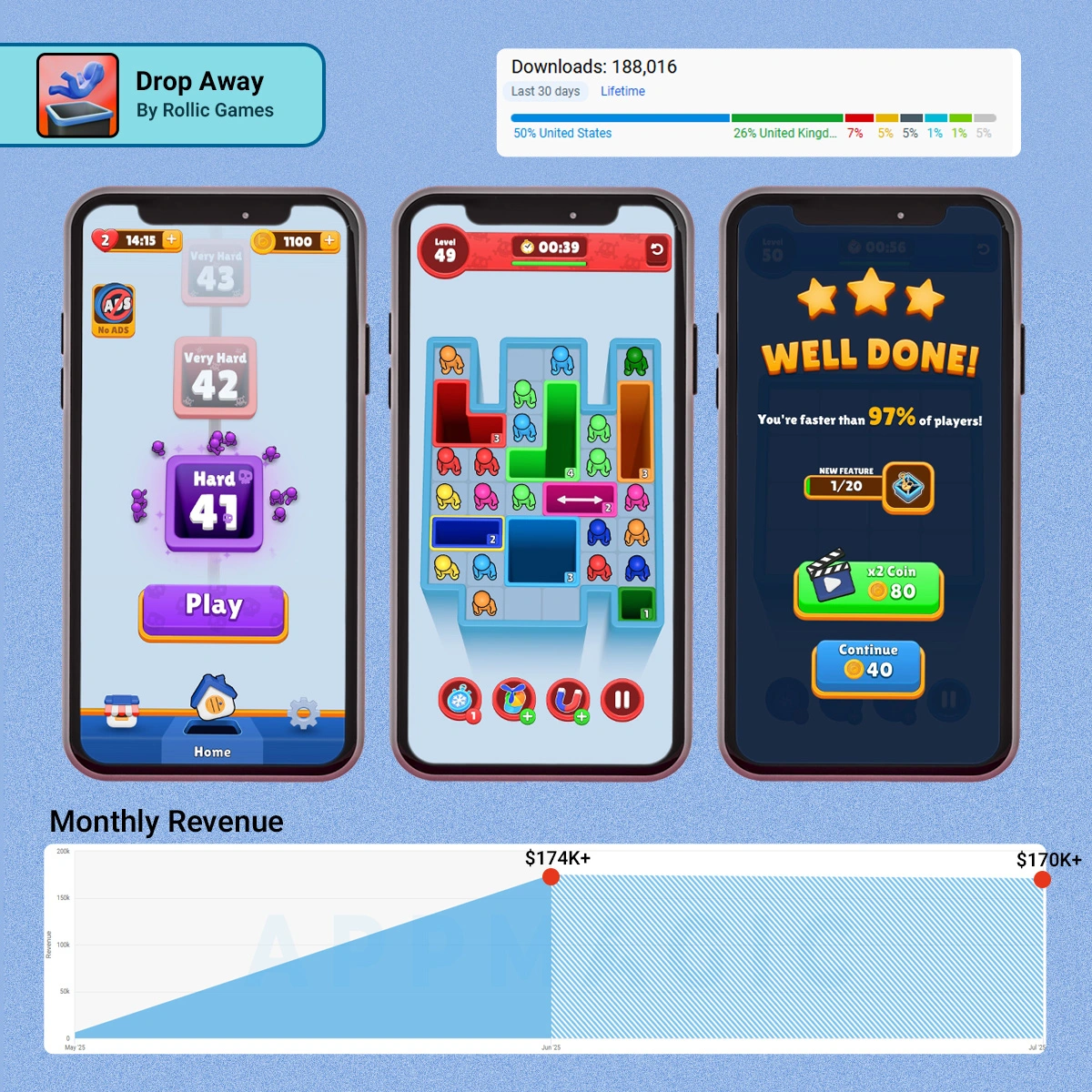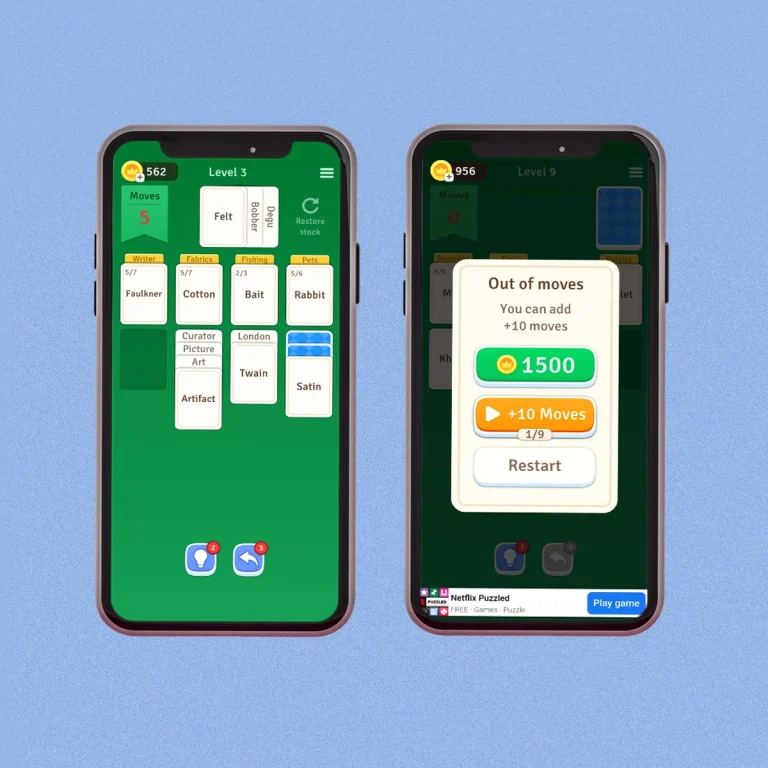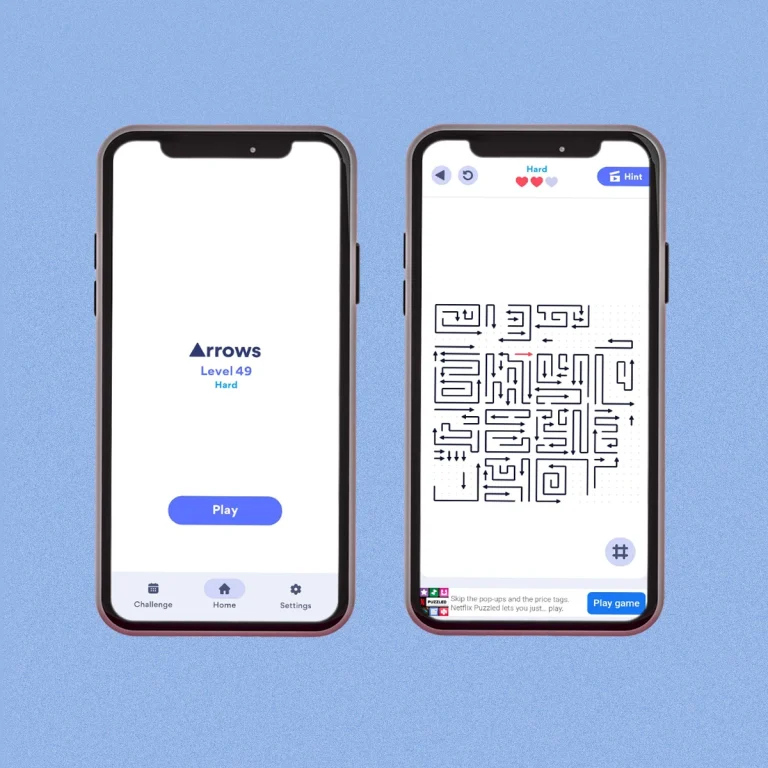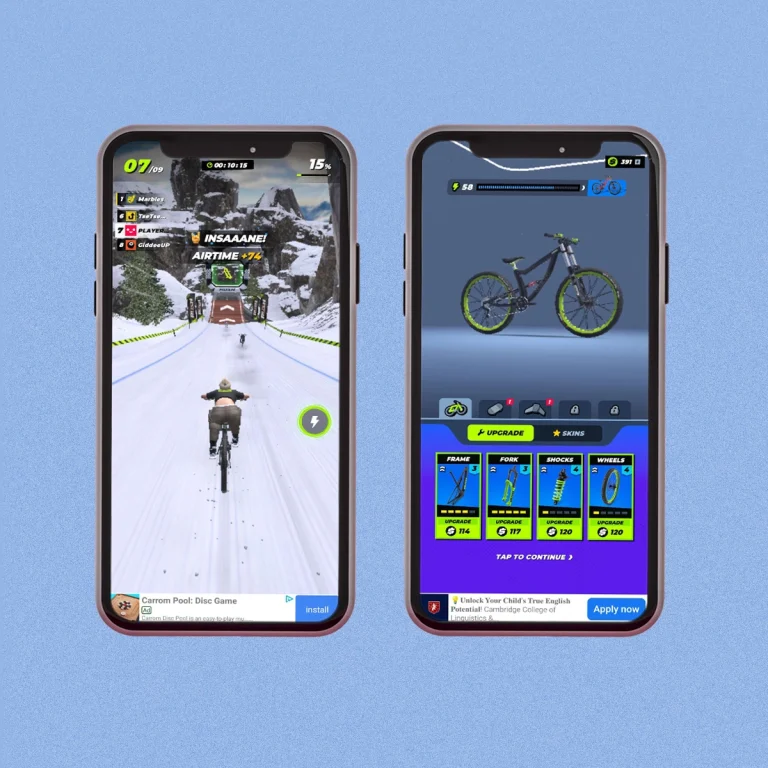Drop Away is a hybrid casual sorting puzzle game released by Rollic Games in August 2024 and it is quietly gaining traction, with revenue already nearing last month’s $170K mark by mid-month, according to AppMagic.

This game blends puzzle mechanics inspired by Color Block Jam with a hole-based interaction system—two proven concepts in the hybrid casual market.
Let’s explore how it builds on these foundations using Rollic’s design template.
Deterministic Puzzles
The game uses time constrained puzzles, but they remain consistent across retries, creating a rewarding loop where players can learn and improve through trial and error. At first glance, many levels appear nearly impossible, but as players make repeated attempts, they gradually become more capable—only to run out of time just before completing the puzzle, encouraging them to try again. Additionally, to maintain engagement and avoid repetition, the game regularly introduces new mechanics such as elevators, one-directional blocks, layered holes, and combined holes, each adding fresh complexity to the gameplay.
Player Progression
The game features a level map that is intentionally held back until level 15, providing players with a clear sense of progress and structure once revealed. Hard-level labels on the map add an extra layer of challenge-driven motivation, encouraging players to push forward. The level completion screen reinforces player effort with motivational messages and displays the unlock percentage for upcoming features, effectively building anticipation. Also as new mechanics are introduced, the game presents onboarding levels to ensure a smooth learning curve. Additionally, the booster system not only assists players in overcoming difficult stages but also introduces monetization opportunities in a supportive way.
Hybrid Monetization
The game’s monetization model strikes a thoughtful balance between ads and IAPs to maintain player satisfaction. RV ads are delayed until level 15, and interstitial ads don’t appear until level 30, ensuring a premium, uninterrupted early-game experience. RVs are used to offer extra hearts and multiply level completion rewards, while boosters and revive offers rely solely on soft currency, subtly guiding players toward IAPs. The game also employs loss aversion techniques, while allowing players to see how far they have come after losing, which helps boost conversions. Additionally, multiple ad removal offers and a variety of bundles in the in-game shop makes monetization feel welcoming and accessible to players with different spending behaviors.
What stood out to you in this game’s design? I’d love to hear your thoughts in the comments.
Original Post: Kavindu Priyanath-LinkedIn


